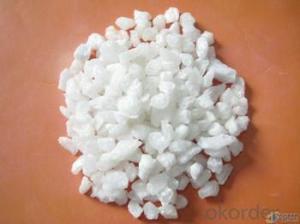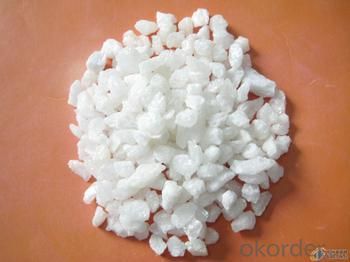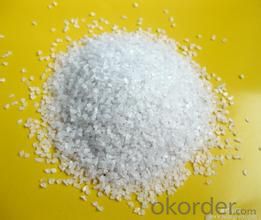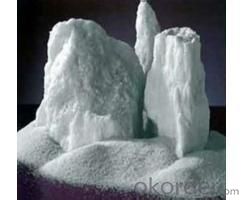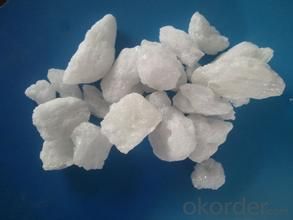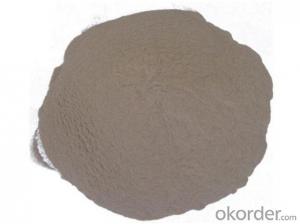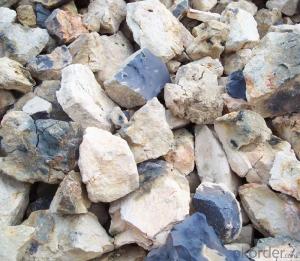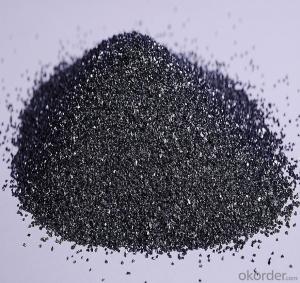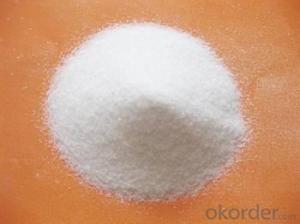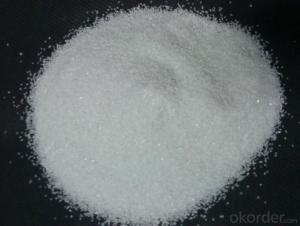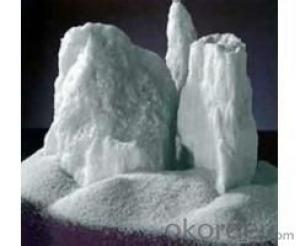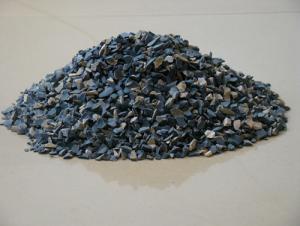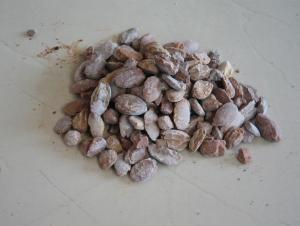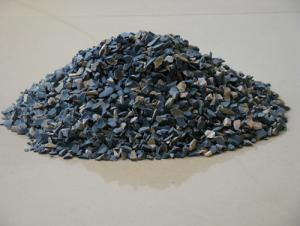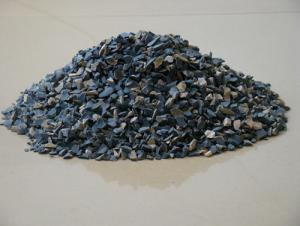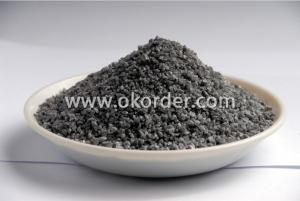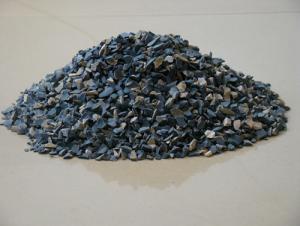Raw Materials for Refractory:White Fused Alumina (99.2% Al2O3, 0.3% Na2O)
- Loading Port:
- China Main Port
- Payment Terms:
- TT OR LC
- Min Order Qty:
- -
- Supply Capability:
- -
OKorder Service Pledge
OKorder Financial Service
You Might Also Like
Packaging & Delivery
| Packaging Detail: | 25kg bag or ton bag or as your requirement. |
| Delivery Detail: | within 20 days delivery after receipt of advance payment. |
Specifications
99% high purity abrasive White fused alumina for refractory
1.White fused alumina99%
2.Refractory: 0-1mm, 1-3mm, 3-5mm, 5-8mm
Products discription
1.Introduction
The main raw material of white fused alumina is high grade processed alumina, which is fused with the carbon material and scrap iron in the electic furnace under the high temperature of above 2200°C.The product is characterized by low expansion coefficient, high refractoriness, good thermal and chemical stability.
2. Grain size commonly used
Refractory: 0-1mm, 1-3mm, 3-5mm, 5-8mm ,200#-0, 325#-0.
Abrasives: F24-F60.
Sandblasting abrasive:F10-F240.
Precision casting: F80-100, F100-F120.
Ceramic & electronic polishing:F240-800.
3.Physical properties of White Fused Alumina
Item | Color | Color System | Mohs Hardness | Melting Temperature(°C) | Refractory Temperature(°C) | True Density( g/cm3) | Magnetic Material |
Specification | white |
trigonal system | min10 | 2250°C | 1900°C | min3.50 | max0.003%
|
4.Chemical index of White Fused Alumina
Purpose | Specification | Chemical composition(%) | Magnetic material content(%) | ||||
Al2O3 | Na2O | SIO2 | CaO | ||||
For abrasive | F | 12#—80# | min99 | max0.6 | max0.4 | max0.003 | |
90#—150# | min98.5 | max0.003 | |||||
180#—240# | min98.2 | max0.7 | max0.4 | max0.002 | |||
For refractory | Size sand | 0—1mm | min99 | max0.5 | max0.4 | max0.003 | |
1—3mm | |||||||
3—5mm | |||||||
5—8mm | |||||||
Fine powder | 200#—0 | min98.5 | max0.5 | max0.5 | max0.003 | ||
325#—0 | |||||||
WE CAN ALSO DO NA2O:0.3% MAX IF CLIENT SPECIAL NEED.
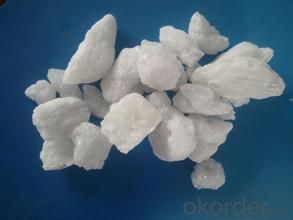
- Q: What are the materials of insulation firebricks?
- The furnaces of firebricks are generally divided into two types, namely, unshaped refractory materials and shaped refractory materials. Unshaped refractory materials, also called castables, is a mix of powdery particles of many aggregates and one or multiple adhesives. They must be stirred well with one or multiple liquids when in use, which has a strong liquidity. Unshaped refractory materials generally refers to firebricks. They have standard rules about their shapes and can also be processed temporarily as needed.
- Q: What type of firebrick does TZ-3 represent?
- Height is 65mm, length is 230mm, and width is 114mm, that is the t-3 firebricks which meet the national standard.
- Q: Using what kind of melting aluminium furnace refractories is more appropriate?
- If it's the ordinary, you can use high aluminum refractory brick with general clay, GB/T 3994-2005 clay heat insulation refractory brick. If you need these with good material, there is high alumina thermal insulation refractory brick, GB/T 3995-2006 high aluminum heat insulation refractory brick, models have A13 and material is the alumina, A13 50 u, high insulating brick B5.Intermediate insulating brick B2, etc. Dolomite brick: good hang kiln performance, good erosion resistance, but brick is usually without f - CaO, hydration, and difficult to transport and storage, less used in the production. Magnesia-chrome bricks: good hang kiln, used in calcining zone. The disadvantage is that its thermal shock resistance is poor and plus hexavalent Cr is toxic, the production and use of magnesite chrome bricks in international countries gradually reduce. Now unit using the brick find replacements as soon as possible.
- Q: What material is used to make furnace pipe of refractory bricks?
- Refractory brick is called refractory?brick for short. It is a kind of refractory material fired by using refractory clay or other refractory materials. Faint yellow or brownish. It is mainly used in building smelting furnace and has resistance to high temperature 1,580 ℃ -1,770 ℃. Also known as refractory?brick. It is refractory material with a certain shape and size. It can be divided into burnt brick, unburned?brick, fused brick (fused cast brick), fire-resistant insulation brick according to preparation technics; It can be divided into standard brick, ordinary brick and special-shaped brick, etc according to shape and size. It can be used as high-temperature building material and structural material of building kiln and all kinds of thermal equipment. It can also withstand a variety of physical and chemical changes and mechanical action under high temperatures. For example, fireclay brick, high alumina brick, silica?brick, magnesia brick, etc.
- Q: What is the fire endurance of fireproof glass cotton?
- Good thermal insulation and thermal insulation. thermal insulation and thermal insulation depends on the heat conductivity coefficient of glass?silk λ=0.043W/m2K. good fireproof?performance, it's fire-resistant capacity is more than 1000 ℃.
- Q: I wanna ask what are the acidic refractories?
- You can look at these: (1) silica?brick with stronge acidity, unshaped silicious refractory, quartz glass and fused silica combined products; (2) semi-silica refractory with moderate acidity and pyrophyllite refractory; (3) clay-based refractory with weak acidity. I hope it is useful!
- Q: What is the the best matching ratio of refractory cement?
- The ratio of cement and sand is about 30 per cent. Properties and Applications of refractory mortar: 1, Good plasticity and easy construction; 2, High bonding strength and strong corrosion resistance; 3, Relatively high refractoriness up to 1650 ℃ ± 50 ℃; 4, Good slag corrosion resistance; 5, Good thermal peeling. Refractory mortar is mainly used in coke ovens, glass furnaces, hot blast furnace and other industrial furnaces. Applied industry: Metallurgy, building materials, machinery, petrochemicals, glass, boiler, electric power, steel, cement, etc. And refractory cement is also known as aluminate cement. Aluminate cement takes bauxite and limestone as raw materials, alumina content of about 50% as the clinker. And it is a hydraulic cementing material made by grinding. Refractory cement is also known as aluminate cement. Aluminate cement is often yellow or brown or gray. The main mineral of aluminate cement is mono calcium aluminate (CaO · Al2O3, abbreviated CA) and other aluminates, and a small amount of dicalcium silicate (2CaO · SiO2), etc. It is a special cement.
- Q: It the Special Fire-Proof Material belonged to ceramics? Is there a national standard of the Special Fire-Proof Material?
- The fiber and reinforcing material of the metal ceramic is also belonged to the Special Fire-Proof Material. ~~~~GB is too much trouble, GB online should ~~~ Lei Bao Refractories for you. The high temperature inorganic coating. 5. The refractory compound. 3. The high melting point oxide. You can search it on the internet according to the classification~~~~ The special refractories can be divided into five categories: 1. metal ceramic
- Q: what materials can make external wall fireproofing paint have the fireproofing effect
- Adding flame retardant or fire retardant materials can be fireproofing, which commonly referred to as the external walls of fire retardant coating or fire retardant coating. Principle: Fireproof paint itself is flame-retardant or non-combustible, so that the protected base material can not directly contact with the air in order to the ignition delay and reducing the burning speed; except that, it also has a lower thermal conductivity, which can delay the transfer of flame temperature to the protected base material; fireproof paint thermal can decompose non-combustible inert gas by heating to dilute the thermal decomposition of combustible gas in protected object, making it difficult to burn or slow down the speed of burning.
Send your message to us
Raw Materials for Refractory:White Fused Alumina (99.2% Al2O3, 0.3% Na2O)
- Loading Port:
- China Main Port
- Payment Terms:
- TT OR LC
- Min Order Qty:
- -
- Supply Capability:
- -
OKorder Service Pledge
OKorder Financial Service
Similar products
Hot products
Hot Searches
Related keywords
